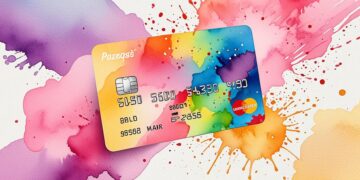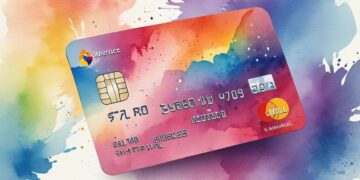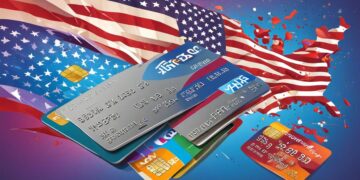Contactless Credit Cards in the USA

Benefits of Contactless Payments
The surge in contactless credit cards in the USA signifies a remarkable shift in consumer behavior, mirroring the broader trends in technology and lifestyle. When it comes to making purchases, speed and convenience reign supreme, and contactless payments deliver on both fronts. No longer do consumers need to bear the burden of carrying exact change or waiting impatiently as cashiers manually process transactions. With just a simple tap of a card on the terminal, payments are completed almost instantaneously, offering a frictionless shopping experience.
Faster Transactions
Imagine standing in line at your favorite coffee shop, coffee craving intensifying as the minutes drag on. With contactless payments, what once was a tedious wait transforms into a swift and seamless transaction. This technology allows for transactions to be completed in seconds, minimizing time spent at the register. Studies indicate that contactless payments can be up to 20% faster than traditional card-swiping methods, which not only enhances customer satisfaction but also increases overall efficiency for businesses.
Enhanced Security
In a world where data breaches and fraud are commonplace, enhanced security features of contactless technology reassure users. Each transaction utilizes advanced encryption and tokenization to protect sensitive information, ensuring that your credit card number is not transmitted directly during the process. As a result, even if your card is lost or stolen, the risk of unauthorized transactions is significantly reduced. Reports from financial institutions highlight that fraudulent activity associated with contactless cards has seen a decline, indicating that consumers are not only enjoying the convenience but also benefiting from robust security measures.
Widely Accepted
Another appealing aspect of contactless payments is their wide acceptance. Major retailers such as Target, Walmart, and countless restaurants across the U.S. have embraced this payment method, enabling customers to enjoy the benefits wherever they shop. In fact, a survey showed that over 80% of consumers indicate that having contactless options enhances their shopping experience. This widespread adoption signifies a trend that aligns with the evolving preferences of consumers who favor quick and effective payment solutions.
Amid rising concerns over hygiene, particularly in light of recent global health events, the contactless card experience also caters to those looking to minimize physical touchpoints. As businesses adapt to this new norm, customers increasingly prioritize safety and convenience in their payment choices.
Empowering Financial Decisions
Understanding the dynamics of contactless payments is vital in an age where technology permeates every facet of our lives. Beyond just speed and security, contactless cards are reshaping how consumers interact with their finances. With instant transaction histories often available via banking apps, users can easily track their spending and manage budgets more effectively. This digital transformation encourages an informed consumer base that is more engaged with their financial decisions.
As the landscape of payments continues to evolve, exploring the depths of this trend offers a wealth of information about personal finance management. Contactless credit cards represent not just a convenience but also an opportunity to embrace financial literacy and modern solutions that meet the needs of today’s consumers.
CHECK OUT: Click here to explore more
The Transformative Power of Contactless Cards
As contactless credit cards gain momentum in the United States, it’s essential to consider not only their functional advantages but also their broader implications for consumer behavior and financial management. These cards are transforming the way we handle everyday transactions, from grocery shopping to dining experiences, fundamentally altering our relationship with money.
Convenience Redefined
The convenience of contactless credit cards cannot be overstated. For many consumers, the simple act of tapping a card is preferable to fumbling for cash or swiping a card, which can often take extra time and require physical contact with the terminal. According to a nationwide survey conducted by a leading payment technology association, around 70% of respondents reported a preference for contactless payments over traditional methods due to the ease of use.
Moreover, the convenience extends beyond just the transaction itself. The integration of contactless technology into mobile wallets, such as Apple Pay and Google Pay, allows users to store multiple cards in one digital space. This means they can leave their physical cards at home, easily switching between them with a quick tap on their devices. It’s a game changer for anyone who has ever found themselves at the register, searching through a wallet filled with multiple cards.
Boosting Business Efficiency
Businesses are also reaping the rewards of contactless credit card adoption. Not only does it enhance the customer experience, but it also leads to operational improvements. Here are some key benefits for retailers:
- Reduced Queuing Times: Faster transaction processing means customers spend less time in line, which translates to improved sales, particularly during peak hours.
- Lower Cash Handling Costs: With fewer cash transactions, retailers minimize the risks and costs associated with handling physical currency.
- Increased Customer Loyalty: A smoother payment experience can lead to greater customer satisfaction, encouraging repeat visits and brand loyalty.
In fact, businesses that have adopted contactless payments report a significant increase in customer retention and a decrease in transaction abandonment rates. As the checkout experience becomes quicker and more efficient, customers are more inclined to complete their purchases, especially in busy environments where time is of the essence.
Impact on Consumer Spending
The ease of contactless payments may also have far-reaching implications for consumer spending habits. The effortless nature of tapping to pay can encourage spontaneous purchases, leading to an increase in overall spending. Research by financial institutions indicates that consumers using contactless methods tend to spend an average of 30% more than they normally would with cash due to the lower psychological barrier to spending. This behavioral shift could prompt consumers to reconsider how they budget and manage their finances.
By removing friction from the purchasing process, contactless credit cards empower consumers to engage more freely with their spending decisions, which can have both positive and negative consequences based on individual financial management practices.
As we continue to explore the world of contactless credit cards, it becomes evident that their impact extends beyond mere convenience. They are reshaping how we interact with money itself, offering a glimpse into the future of payments and consumer finance in America.
SEE ALSO: Click here to read another article
Revolutionizing Security and Trust
As the adoption of contactless credit cards continues to rise, one of the most critical aspects attracting attention is security. In a world where cybersecurity threats loom large, consumers are increasingly concerned about the safety of their financial information. Fortunately, contactless credit cards are built with advanced technology to address these concerns, enhancing consumer confidence in this payment method.
Enhanced Security Features
Contactless credit cards utilize EMV chip technology, which significantly reduces the risk of fraudulent transactions. Each transaction generates a unique code that cannot be reused, making it exceedingly difficult for cybercriminals to replicate. This system offers a substantial upgrade over traditional magnetic stripe cards, which store static information prone to theft.
Moreover, the addition of Near Field Communication (NFC) technology enables secure communication between the card and the payment terminal using encrypted data. According to the Federal Reserve, this encryption is a vital layer of security that prevents unauthorized access and potential data breaches. The same technology is employed in mobile wallets, leveraging biometric security measures such as fingerprints or facial recognition for an added level of protection.
Consumer Adaptation and Familiarity
Despite the security enhancements, some consumers remain hesitant due to misconceptions surrounding contactless payments. A recent study indicated that approximately 40% of American consumers are unsure about the safety of tap-to-pay methods. To alleviate these apprehensions, educational initiatives are critical. Retailers and financial institutions are rolling out campaigns aimed at informing the public about the built-in protections of contactless transactions, reassuring users of the safety of their financial data.
Interestingly, as consumers become more familiar with contactless technology, the concern diminishes. Reports suggest that exposure plays a pivotal role in building trust; once users experience the convenience and security firsthand, uptake increases exponentially. This shift in perception has potential long-term implications for the adoption rate of contactless payments and the broader landscape of digital finance.
The Future of Contactless Payments
Looking ahead, the future of contactless credit cards in the USA appears promising. Innovations such as biometric payment methods and integration with wearables like smartwatches and fitness trackers are on the horizon. These advancements are set to offer even greater convenience and security, eliminating the need for a physical card altogether. A recent forecast by a leading financial consultancy predicts that by 2025, nearly half of all credit card transactions in the U.S. will be contactless. This trend signifies a shift in consumer preferences and payment behavior that aligns with the fast-paced nature of modern life.
As we explore the vast possibilities of contactless credit cards, it becomes evident that they are more than just a way to streamline transactions. They represent a cultural transformation in how we perceive and conduct financial exchanges, ultimately contributing to a future where cash is increasingly seen as an outdated relic. The journey of contactless payments has just begun, and its trajectory suggests that convenience, security, and innovation will continue to drive consumer adoption and reshape the finance landscape in America.
CHECK OUT: Click here to explore more
Embracing the Future of Payments
In conclusion, the rise of contactless credit cards in the USA is a significant development in the evolution of financial transactions. With their advanced security features such as EMV chip technology and Near Field Communication, contactless payments are not only more convenient but also provide enhanced protection against fraud. As consumer awareness grows, so does confidence in their safety, leading to a paradigm shift in payment behaviors across the nation.
Furthermore, the rapid adoption of contactless cards correlates strongly with the ongoing advancements in technology and the increasing integration of payment systems with mobile devices and wearables. As we approach 2025, when projections suggest that nearly 50% of all credit card transactions will be contactless, it becomes clear that society is ready to embrace this modern payment method wholeheartedly.
However, it is essential for consumers to stay informed and educated about the benefits and security measures that accompany contactless payments. Retailers and financial institutions must continue their efforts to demystify these technologies, reassuring users about the robustness of their financial data protection.
The future holds exciting prospects for financial transactions in the USA. As contactless payment systems continue to evolve, they will likely play a crucial role in streamlining commerce while reshaping consumer experiences. Understanding these emerging trends and innovations not only prepares users for upcoming changes but also invites them to explore the dynamic world of finance further.






